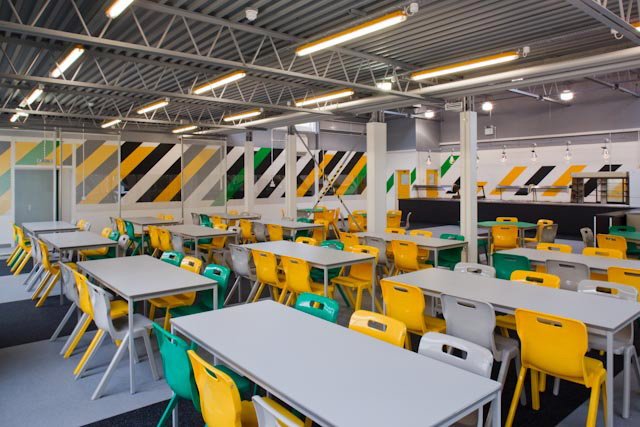Collaboration & Comfort: Is This the Future of Learning Spaces?
The last few years have been a tough and turbulent one for everyone. For students, it’s been an upheaval for not only their education, but also their social skills and the relationships built with friends and staff. After this last year, many students are happy to be able to connect and collaborate with others in person again, rather than over a screen or phone. The need for connection and collaboration in school settings is vital. Not only can it uplift a student’s mood and overall well-being, but it can also improve productivity and creativity.
So, is collaborative learning the way forward for educational settings?
The Benefits of Collaborative Learning:
The environments where we work and learn have the ability to significantly impact on both our interest and our well-being. So, why shouldn’t we strive to make them as collaborative, comfortable and space-savvy as possible?
A classroom, however big or small, is a microcosm of the universe for students. A classroom is an excellent space to instil practices that can help students progress and adapt throughout their adult lives.
Collaborative learning encourages students with different backgrounds, race, or up bringing, to work together, creating a more inclusive and friendly environment to learn and work in. Collaborative working not only helps with a student’s confidence, but also helps them to hear different opinions and learn more about different cultures and understandings of topics.
Students need to be made comfortable working in groups. Implementing certain colour schemes into the classroom can influence the emotional state and subsequently the behaviour of its students. Studies believe that the use of certain colours can increase productivity by as much as 10%, can reduce truancy, and improve the well-being of students. Bright colours, such as yellows and oranges, were found to increase mental awareness, and soft blue and green shades were seen to help create an atmosphere of calm within the classroom.
ARC:
The Arc range wants to create adaptive, flexible, and dynamic spaces for everyone in learning environments and aims to re-energise working and learning spaces, making them a more collaborative environment for all users, while also incorporating a thoughtful level of safety and consideration when it comes to social distancing and personal space.
The Impact of Comfort:
The way we teach isn’t the only concept to have evolved through the past decade when it comes to education. Many educational settings are beginning to understand the necessity of student comfort.
Now, in a new age of schooling, many educational settings are creating spaces where students want to learn rather than spaces where they’re forced to learn. With a more comfortable atmosphere, students have the opportunity to grow, learn, and be productive without the challenges of an uncomfortable environment.
By adding comfortable seating choices for the classrooms and study areas, you not only provide students with choice, but also help students find the type of seating that helps them focus best. Some students find colour stimulating. By integrating colourful furniture into your settings, it ca not only improve a students mood, but also improve their attention span and ability to focus on their work.
One of Arc’s main purposes is to provide comfort for its users through colour. The impact that colour can have on students has been studied far and wide. It’s believed that implementing certain colour schemes into the classroom can influence the emotional state and subsequently the behaviour of its students.
Classrooms that help students relax and feel comfortable are slowly becoming the norm. Whether it be by introducing nature or bright colours into the setting or by integrating furniture like Arc that is all about improving posture and productivity and providing comfort. With bright and comfortable settings, students can better focus on the tasks at hand.
The environments where we work and learn have the ability to have a significant impact on both our productivity and our well-being. So, why shouldn’t we strive to make them as collaborative, comfortable and space-savvy as possible?

